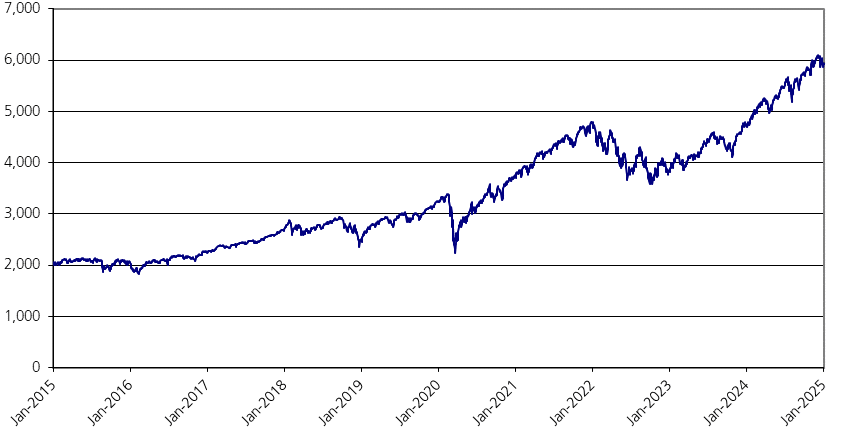♦Changes affecting a basket asset, including regulatory changes, could have an adverse effect on the market value of, and return on, your Notes — The policies of any index sponsor as specified under “Information About the Underlying Basket and the Basket Assets” (each, an “index sponsor”), concerning additions, deletions and substitutions of the underlying constituents and the manner in which such index sponsor takes account of certain changes affecting those underlying constituents may adversely affect the level of the applicable basket asset. The policies of an index sponsor with respect to the calculation of the applicable basket asset could also adversely affect the level of such basket asset. An index sponsor may discontinue or suspend calculation or dissemination of the applicable basket asset. Further, indices like each basket asset have been, and continue to be, the subject of regulatory guidance and proposal for reform, including the European Union’s Regulation (EU) 2016/1011. The occurrence of a benchmark event (as defined in the accompanying product supplement under “General Terms of the Securities — Discontinuance of, Adjustments to, or Benchmark Event or Change in Law Affecting, an Underlying Index; Alteration of Method of Calculation”), such as the failure of a benchmark (the applicable basket asset) or the administrator (its index sponsor) or user of a benchmark (such as UBS), to comply with the authorization, equivalence or other requirements of the benchmarks regulation, may result in the discontinuation of the relevant benchmark or a prohibition on its use. If these or other events occur, then the calculation agent may select a successor index, reference a replacement basket or use an alternative method of calculation, in each case, in a manner it considers appropriate, or, if it determines that no successor index, replacement basket or alternative method of calculation would be comparable to the original basket asset, it may deem the closing level of the original basket asset on the trading day immediately prior to the date of such event to be its closing level on each applicable date. Such events and the potential adjustments are described further in the accompanying product supplement under “— Discontinuance of, Adjustments to, or Benchmark Event or Change in Law Affecting, an Underlying Index; Alteration of Method of Calculation”. Notwithstanding the ability of the calculation agent to make any of the foregoing adjustments, any such change or event could adversely affect the market value of, and return on, the Notes.
♦We cannot control actions by the index sponsors or any underlying constituent issuer and none of the index sponsors or any other underlying constituent issuer have any obligation to consider your interests — Neither UBS nor our affiliates are affiliated with the index sponsors or have any ability to control or predict their actions, including any errors in or discontinuation of public disclosure regarding methods or policies relating to the calculation of the basket assets. In addition, neither we nor our affiliates are affiliated with any other underlying constituent issuer or have any ability to control or predict their actions or their public disclosure of information, whether contained in SEC filings or otherwise. None of the index sponsors or any other underlying constituent issuer is involved in the Notes offering in any way and none have any obligation to consider your interest as an owner of the Notes in taking any actions that might affect the market value of, and return on, your Notes.
♦The basket assets reflect price return, not total return — The return on your Notes is based on the performance of the underlying basket and, therefore, the basket assets, which reflect the change in the market prices of their underlying constituents. None of the basket assets are a “total return” index or strategy, which, in addition to reflecting those price returns, would also reflect any dividends paid on the underlying constituents. Accordingly, the return on your Notes will not include such a total return feature or dividend component.
Estimated Value Considerations
♦The issue price you pay for the Notes will exceed their estimated initial value — The issue price you pay for the Notes will exceed their estimated initial value as of the trade date due to the inclusion in the issue price of the underwriting discount, hedging costs, issuance and other costs and projected profits. As of the close of the relevant markets on the trade date, we will determine the estimated initial value of the Notes by reference to our internal pricing models and it will be set forth in the final pricing supplement. The pricing models used to determine the estimated initial value of the Notes incorporate certain variables, including the levels and volatility of the basket assets and underlying constituents, any expected dividends on the underlying constituents, the correlation among the basket assets, prevailing interest rates, the term of the Notes and our internal funding rate. Our internal funding rate is typically lower than the rate we would pay to issue conventional fixed or floating rate debt securities of a similar term. The underwriting discount, hedging costs, issuance and other costs, projected profits and the difference in rates will reduce the economic value of the Notes to you. Due to these factors, the estimated initial value of the Notes as of the trade date will be less than the issue price you pay for the Notes.
♦The estimated initial value is a theoretical price; the actual price at which you may be able to sell your Notes in any secondary market (if any) at any time after the trade date may differ from the estimated initial value — The value of your Notes at any time will vary based on many factors, including the factors described above and in “— Risks Relating to Characteristics of the Underlying Basket and Basket Assets — Market risk” above and is impossible to predict. Furthermore, the pricing models that we use are proprietary and rely in part on certain assumptions about future events, which may prove to be incorrect. As a result, after the trade date, if you attempt to sell the Notes in the secondary market, the actual value you would receive may differ, perhaps materially, from the estimated initial value of the Notes determined by reference to our internal pricing models. The estimated initial value of the Notes does not represent a minimum or maximum price at which we or any of our affiliates would be willing to purchase your Notes in any secondary market at any time.
♦Our actual profits may be greater or less than the differential between the estimated initial value and the issue price of the Notes as of the trade date — We may determine the economic terms of the Notes, as well as hedge our obligations, at least in part, prior to the trade date. In addition, there may be ongoing costs to us to maintain and/or adjust any hedges and such hedges are often imperfect. Therefore, our actual profits (or potentially, losses) in issuing the Notes cannot be determined as of the trade date and any such differential between the estimated initial value and the issue price of the Notes as of the trade date does not reflect our actual profits. Ultimately, our actual profits will be known only at the maturity of the Notes.
Risks Relating to Liquidity and Secondary Market Price Considerations
♦There may be little or no secondary market for the Notes — The Notes will not be listed or displayed on any securities exchange or any electronic communications network. There can be no assurance that a secondary market for the Notes will develop. UBS Securities LLC and its affiliates intend, but are not required, to make a market in the Notes and may stop making a market at any time. If you are able to sell your Notes prior to maturity, you may have to sell them at a substantial loss. The estimated initial value of the Notes does not represent a minimum or maximum price at which we or any of our affiliates would be willing to purchase your Notes in any secondary market at any time.





